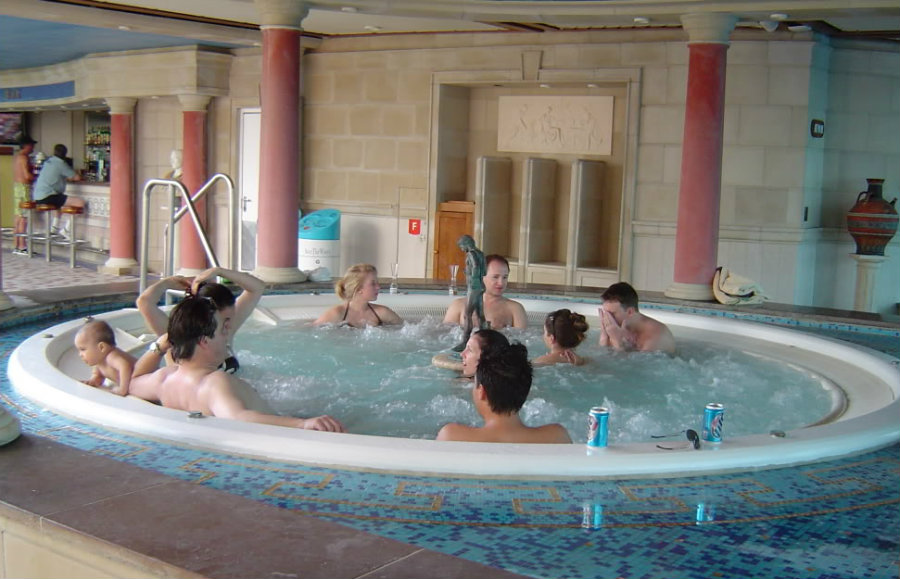A group of researchers at the University of Alberta in Canada created a method to determine if a pool has pee in it and if it does, how much there is. The test was designed to estimate the amount of pee that has been secretly added to a large volume of water, considering that when pee is mixed with pool water, there is no way to precisely define its the level.
It is very difficult to know exactly how much of a substance there is in a pool, according to chemist Xing-Fang Li, lead author of the study, who says it was not an easy task to develop a mechanism to measure those levels. The research team assures that thanks to their work it is possible to know how much pee is in a pool by measuring all the artificial sweeteners that are commonly found in most person’s urine.

According to Li, several sweeteners serve as a good proxy for pee, as she explained that some of them are made to travel “right through you,” as they often do not decompose automatically in the water inside a pool. In this issue, she says that the smell that people detect in some swimming pools is the odor produced by the mix of chlorine (and other chemicals) with human segregations like sweat, body oils, and urine. Li explained that the smell needs high amounts of those segregations for it to be so potent and permanent.
As explained in the study, one big public swimming pool that can have about 220,000 gallons can present over 20 gallons of human urine. Also, the researchers estimate that in a common residential pool, that measures about 20-by-40-foot and five-feet deep, there can be two whole gallons of urine. Even when this quantity only represents about one-hundredth of a percent, this amount of pee in a large volume of water can translate into serious health concerns, without thinking about the annoying and potent smell that does not fade out.
Testing the water
Li and her colleagues gathered water samples from several pools and hot tubs in distinct recreation centers in two cities from Canada and were able to measure one particular type of sweetener called acesulfame potassium (ace-K). This substance is very common in much types of foods as it can be found in soups, yogurts, sodas, and nearly all processed food. The fact that the presence of this sweetener in many foods is so common makes the work easier for researchers when it comes to detecting the amount of pee within pools.
The investigators explained that the ace-K is not an element that is exclusively present in North Americans’ diets, as it is a substance that can be found in Europe and China as well. Given the fact that many people consume food that has the ace-K sweetener, with this new mechanism it is possible to define the amount of pee in both Canadian and Chinese pools or hot tubs.

After the research team had gathered the water samples, they were able to determine the exact amount of pee within the studied pools. After three weeks of recollections, the team identified the ace-K sweetener present in the samples and concluded that in the largest pool studied that had over 830,000 liters of water, swimmers released 75 liters of pee. Meanwhile, in the second pool studied that was half the size of the first, swimmers released more than 30 liters of urine.
“Our study provides additional evidence that people are indeed urinating in public pools and hot tubs,” co-author of the study and graduate from the University of Alberta, Lindsay Blackstock, said. “We did not monitor the number of pool users over the three week time period … so there is no way we could estimate the number of individual urination events per day,”
In the case of hot tubs, the results turned out to be much worse than the findings from all the public pools. According to the publication, the eight hot tubs measured by the research team presented considerably higher urine levels. In fact, one of the hotel hot tubs analyzed presented an ace-K level three times greater than the records from the worst swimming pool studied.
Blackstock said that their investigation showed how all the samples collected from 31 different pools and hot tubs presented ace-K sweetener in its composition. The research team was able to use the average ace-K concentration in Canada’s urine levels for then converting those ciphers into the pee level present in pools and hot tubs. In this issue, a recent survey showed how 20 percent of adults admitted having peed in a pool at least once, as Blackstock says that since this generates a health problem, it must be attacked.
“We want to use this study to promote public education on appropriate swimming hygiene practices,” said Blackstock. “We should all be considerate of others and make sure to exit the pool to use the restroom when nature calls.”
Source: The Guardian
